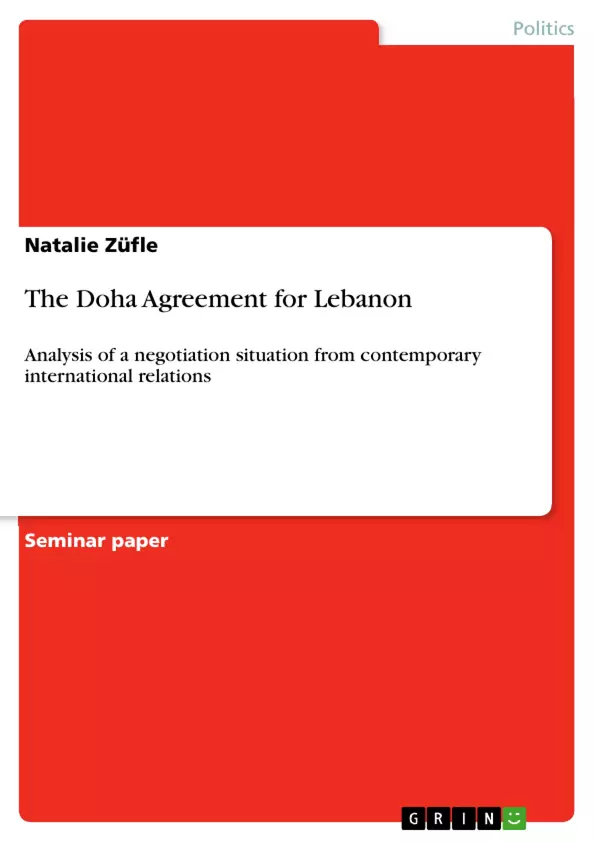A serious political crisis almost led to another civil war in Lebanon. Thanks to Qatar’s mediating efforts, a workable solution to the problems was achieved, resulting in the Doha-Agreement. The talks were examined along various concepts of negotiations theory. Negotiations with Lebanese are a vivid evidence how complicated such a process might be. Last but not least, each bargaining situation is unique and doesn’t necessarily apply to any general theories, but rather to a good mix of all.
Inhaltsverzeichnis (Table of Contents)
- The problem: a stalwart political crisis
- High politics and Issue Salience
- Context and Legacies
Zielsetzung und Themenschwerpunkte (Objectives and Key Themes)
This paper analyzes the 2008 Doha Agreement for Lebanon, which aimed to resolve a tense political situation on the verge of escalating into civil war. It examines the context, process, and key actors involved in the negotiations, and analyzes these elements through the lens of negotiation literature. The paper further explores the strategies and tactics employed during the negotiations.
- The political crisis in Lebanon and its origins
- The salience of the issue and the role of high politics
- The impact of the crisis on the negotiation process
- The strategies and tactics employed in the Doha Agreement negotiations
- The role of third-party mediation in the agreement
Zusammenfassung der Kapitel (Chapter Summaries)
The problem: a stalwart political crisis
This section delves into the background of the Lebanese political crisis, outlining the power struggles and sectarian divisions that led to a political impasse. It describes the events leading up to the violent crisis in May 2008, emphasizing the urgency for intervention.High politics and Issue Salience
This section explores the political stakes of the negotiations, highlighting their importance in preventing a potential civil war and maintaining regional stability. It examines the urgency of the situation and the high level of media attention surrounding the conflict.Context and Legacies
This section examines the context of the negotiations, analyzing the role of previous crises and the legacy of strained relationships between the parties. It discusses the potential impact of the crisis on the negotiation process and the importance of a successful outcome for future relations.
Schlüsselwörter (Keywords)
Key terms and concepts explored in this paper include: international negotiation, political crisis, sectarianism, power-sharing, electoral reform, third-party mediation, high politics, issue salience, negotiation strategies and tactics, Doha Agreement, Lebanon.
- Citar trabajo
- Natalie Züfle (Autor), 2009, The Doha Agreement for Lebanon , Múnich, GRIN Verlag, https://www.grin.com/document/180076



